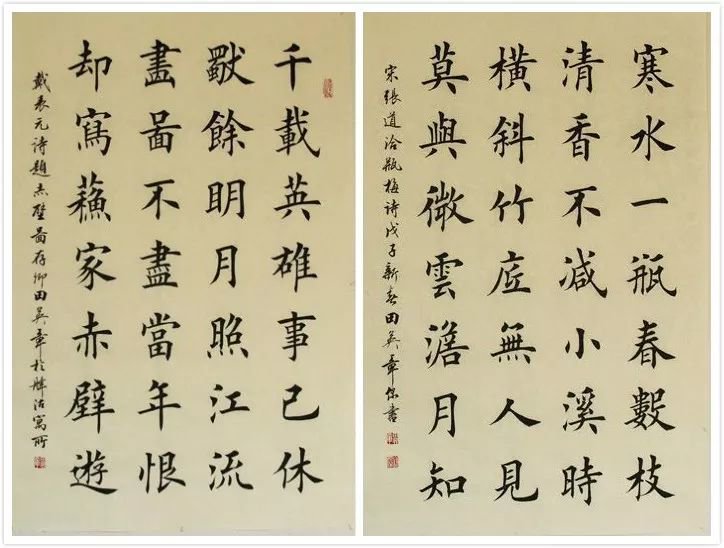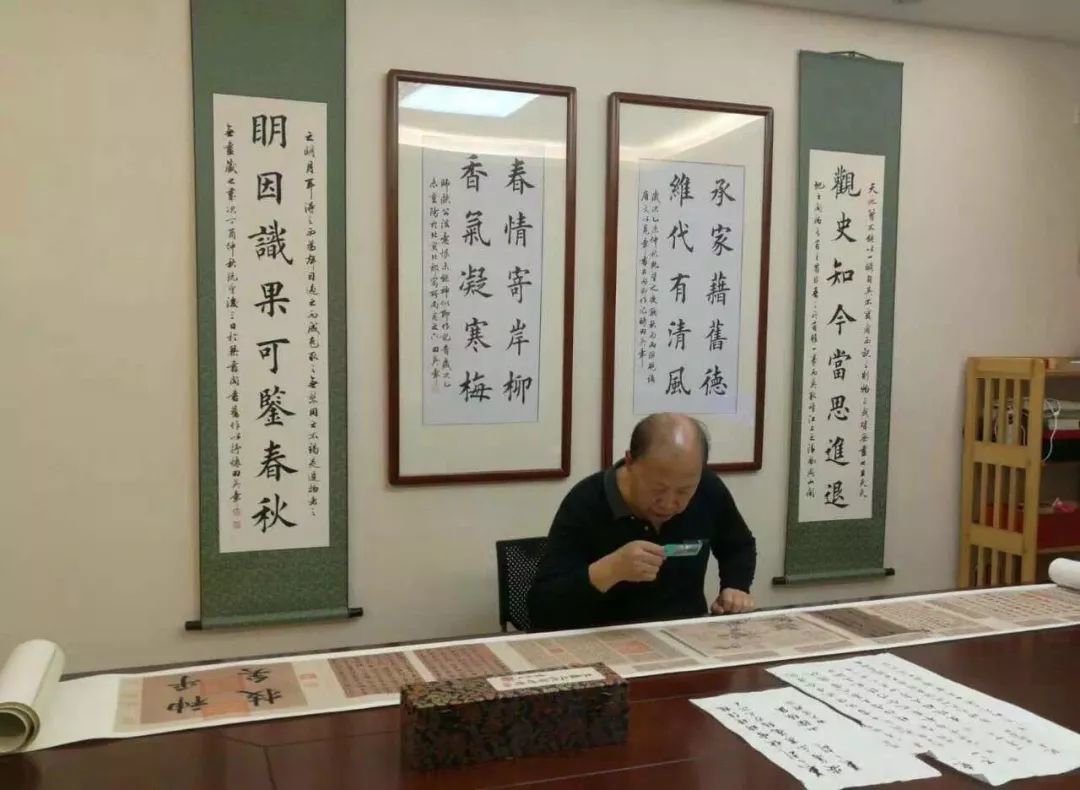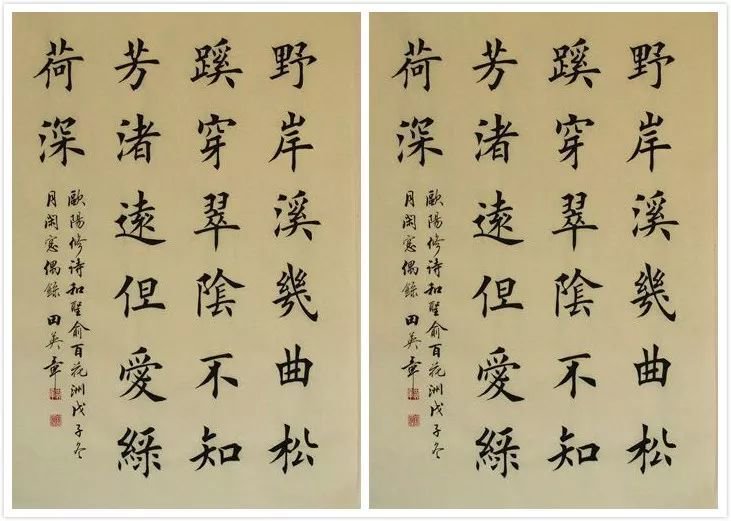What do you think is calligraphy?
Calligraphy is the only art that can be touched with "a pen". As the old saying goes, "Words are like the person they are." Just because everyone can write, calligraphy accomplishments can best directly reflect a person's aesthetics and personality. Anyone who writes good calligraphy is admirable. They have profound skills, are calm and restrained, and when writing, they are vigorous and powerful, with magnificent momentum. Just like musicians, they bring visual rhythm and passion to people, attracting the admiration of countless people!
As long as it is calligraphy, it must be elegant, standardized and methodical. As Jiang Kui, a calligrapher of the Song Dynasty, said: "The ancients wrote cursive script and now people write regular script, and there is no single stroke of it." Whether it is cursive script, regular script, or even the controversial "ugly script" today, if one day it truly becomes Calligraphy must also have its own rules, rather than being arbitrary and arbitrary.

This standardized method includes brushwork, strokes, structure, composition, and ink techniques, which are the basis of all calligraphy. Only by practicing these basics well and solidly can we truly "know everything", and only those who combine these five points can be called "calligraphy" works.
How to practice "good" calligraphy?
First there is the "method" of calligraphy, and then there is "calligraphy". There is no calligrapher whose basic skills are as solid as a rock.
The "only correct" path to calligraphy is "practice". But in this case, why do a large number of calligraphy enthusiasts still encounter problems such as "After practicing for more than half a year, the handwriting has not improved at all", "I have been writing for three months, but I still feel that my writing is not good enough"?

In ancient times, there was a word called "hand-by-hand teaching", which described a way of teaching calligraphy in ancient times. In fact, the most orthodox ancient calligraphy inheritance uses this kind of teaching method. Why do this? Because if ordinary people want to improve when practicing calligraphy, they must first know where they can improve. Otherwise, if they continue to practice based on mistakes, they will only fall deeper and deeper into misunderstandings.
There are usually three reasons why ordinary people fall into misunderstandings:
1. I don’t know how to write posts and cannot evaluate the quality of the words.
Looking back at the early days of calligraphy practice, each of us had no standard for evaluating the quality of calligraphy. We could only compare it with the copybook to see if it was similar or not. But how can something like or unlike be easily explained in a few words? Ever since, after studying for a long time, I found that the writing still doesn't look like it. Even after three months of writing, I don't know if I can write like it... This kind of thing is full of beginners in the process of learning calligraphy.
In fact, to write a character, you must first learn its structure and strokes. Once the structure and strokes are in place, the effect of the written characters will not be so bad. But what exactly is the structure like? How to write strokes? These often cannot be learned directly from copybooks, and beginners can only rely on their own "guessing".

2. Can’t use a pen and don’t know the correct way to write.
Sometimes, we read the post carefully and analyze the structure and strokes of the font, and then copy it carefully. But it turns out that there are still many differences from the original post. Sometimes I have seriously wanted to write out his original appearance, but I just can't...
The most likely reason here is that there is a deviation in the way of using the pen, or the mastery is not proficient. These include using the front, hiding the front, pressing, rhythm, gestures, etc. Three-dimensional or dynamic factors cannot be obtained directly from the copybook. They can only rely on calligraphy practitioners to constantly explore and finally find the same way of using the pen as the original post.
3. Falling into misunderstandings and developing wrong writing habits
In fact, the first two points are not fatal. The most difficult problem in learning calligraphy is your own wrong writing habits! This question is a difficult level for both novices and veterans.
Whenever we write, the writing memory of the brain and muscles that has been solidified in the past will lie there like Mount Everest. When you don't think seriously or are not sure of it clearly, it will pull you back like a magnet. Adsorbed to your past orbit. As for this, if you don’t have a competent teacher, you can basically rely on your own epiphany one day...
Therefore, if there is a top domestic calligraphy master who is willing to "teach you step by step" with you, teach you how to identify the structure and strokes of fonts, teach you the correct use and hiding of edges, and continue to point out the correct calligraphy habits for you, then...
A calligraphy expert appointed by the State Council with more than 40 years of teaching experience. Students who like calligraphy can check out Teacher Tian Yingzhang’s calligraphy tutorials.
To be more precise, perhaps some people will complain that Mr. Tian Yingzhang is among the best in calligraphy attainments, but when it comes to his experience in teaching calligraphy, there is no doubt that he is unmatched in the contemporary world. As a representative figure of contemporary European regular script, almost all those who study calligraphy, whether they practice European regular script or not, will know Mr. Tian Yingzhang.
In fact, Mr. Tian Yingzhang’s influence is not limited to the calligraphy circle. Ou Kai itself is the best bridge for beginners to master the structure of fonts. Even if you are not a calligraphy enthusiast, Mr. Tian Yingzhang’s name will always appear in children’s copybooks, because Mr. Tian Yingzhang’s teaching system is officially recognized and approved by the Ministry of Education. Recommended system.








